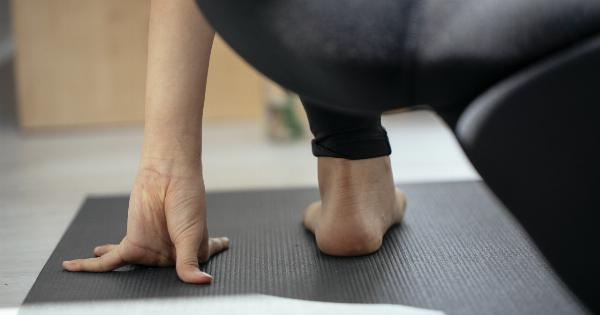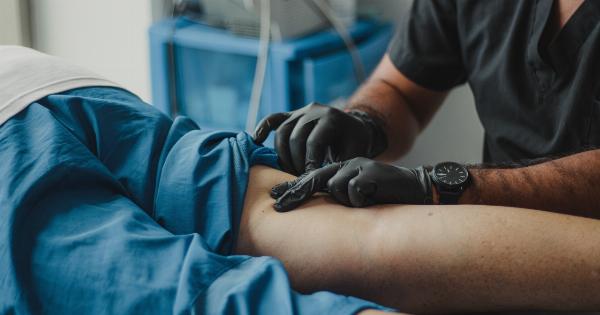Knee arthroplasty is a surgical procedure commonly performed on patients with severe knee pain, stiffness, and decreased mobility.
In this procedure, the damaged parts of the knee joint are replaced with artificial implants to relieve pain and improve joint function.
However, there are many myths surrounding knee arthroplasty that can create confusion, anxiety, and hesitation among patients who need this surgery. Here are some of the most common myths about knee arthroplasty and the truth behind them:.
Myth 1: Knee replacement is only for old people
Fact: While knee replacement is more common in people over 60 years old, it can be successful in younger patients as well, especially those who have had injuries, congenital deformities, or diseases that affect the knee joint.
In fact, according to the American Academy of Orthopedic Surgeons, over 40% of knee arthroplasty patients are between 45 and 64 years old. The decision to have knee arthroplasty should be based on the severity of the knee condition and the patient’s overall health, not just age.
Myth 2: Knee replacement surgery is very painful
Fact: While knee arthroplasty is a major surgery that involves cutting through the skin, muscles, and bones, it is typically not as painful as people think.
In fact, most patients report less pain after knee replacement than before the surgery, as the artificial implants relieve the pressure and inflammation in the knee joint. Also, modern pain management techniques, such as nerve blocks, epidurals, and opioids, can effectively control pain and make recovery more comfortable.
Myth 3: Knee replacement leads to limited mobility and activity
Fact: Knee arthroplasty is designed to improve mobility and activity in patients who have been limited by knee pain and dysfunction.
While some restrictions and precautions are advised during the initial recovery period, such as avoiding high-impact activities and using assistive devices, most patients can resume their normal daily activities within a few weeks to months after surgery. With proper rehabilitation and exercise, knee arthroplasty can actually enhance the range of motion and strength of the knee joint.
Myth 4: Knee replacement lasts only a few years
Fact: While it is true that knee implants may wear down over time, the lifespan of modern knee replacements is much longer than before.
Most knee implants are designed to last up to 20 years or more, depending on the patient’s activity level, weight, age, and implant type. Moreover, revision knee arthroplasty, which involves replacing a worn-out or failed implant with a new one, is also available and can provide long-term relief and improvement.
Myth 5: Knee replacement is very expensive
Fact: While knee arthroplasty may entail some costs, such as hospitalization, anesthesia, implants, and rehabilitation, it is not as expensive as many people assume.
In fact, knee replacement is one of the most cost-effective surgeries in terms of improving quality of life and reducing healthcare utilization. According to a study published in the Journal of Bone and Joint Surgery, knee arthroplasty can save patients, insurers, and society up to $40,000 per patient in medical costs and productivity losses over 20 years.
Moreover, many insurance plans, including Medicare, cover knee replacement surgery.
Myth 6: Knee replacement is risky and has many complications
Fact: While all surgeries carry some risks and potential complications, knee arthroplasty has a high success rate and low complication rate, especially when performed by an experienced and skilled surgeon and medical team.
According to the American Joint Replacement Registry, the overall revision rate for knee arthroplasty is less than 5% at 10 years after surgery, which means that most patients have a good and durable outcome. Some of the common complications of knee arthroplasty, such as infection, blood clots, and joint stiffness, can be prevented or managed with proper preoperative evaluation, perioperative care, and postoperative follow-up.
Myth 7: Knee replacement is the only solution for knee pain and dysfunction
Fact: While knee arthroplasty is a highly effective and reliable treatment for severe knee pain and dysfunction, it is not the only solution for all knee problems.
Depending on the cause and severity of knee pain, other treatments may be considered first, such as physical therapy, medications, injections, braces, or arthroscopic surgery. Moreover, knee replacement may not be suitable or advisable for all patients, such as those with active infections, bleeding disorders, or poor health status.
The decision to have knee arthroplasty should be made after a thorough and personalized evaluation by a qualified orthopedic surgeon and shared decision-making process with the patient and their family.
Myth 8: Knee replacement will make you taller or shorter
Fact: While knee arthroplasty involves removing the damaged parts of the knee joint and replacing them with artificial components, the surgery does not change the height or stature of the patient.
The length of the leg may appear slightly longer or shorter immediately after surgery due to swelling, bandages, or braces, but this is temporary and will resolve over time. Moreover, the most commonly used knee implants have fixed dimensions and do not alter the overall leg length or alignment.
Myth 9: Knee replacement is a cosmetic procedure
Fact: Knee arthroplasty is a medical procedure that aims to alleviate pain, restore function, and improve quality of life in patients with severe knee conditions. It is not a cosmetic procedure that aims to enhance appearance or attractiveness.
While knee replacement may improve the physical appearance of the knee joint, such as reducing swelling, deformity, or asymmetry, this is not the primary goal of the surgery. Knee arthroplasty should be considered as a functional and medical intervention, not a cosmetic or elective intervention.
Myth 10: Knee replacement is a quick fix that guarantees instant success
Fact: Knee arthroplasty is a major surgery that requires adequate preparation, care, and commitment from the patient and their family.
While the surgery can provide significant and long-lasting relief, it is not a quick fix or a magic bullet that guarantees instant success or pain-free living.
Patients who undergo knee replacement should be willing to invest time, effort, and resources in preoperative evaluation, postoperative recovery, and lifelong maintenance of their knee health, such as weight management, exercise, and regular follow-up with their surgeon. Knee replacement is a partnership between the patient and the surgeon, and both parties play a crucial role in achieving the desired outcome.
Conclusion
Knee arthroplasty is a safe, effective, and beneficial treatment for many patients with severe knee pain and dysfunction.
However, there are many myths and misconceptions about knee replacement that can hinder patients from seeking and receiving appropriate care. By understanding the truth and facts about knee arthroplasty, patients can make informed and confident decisions about their knee health and well-being.































